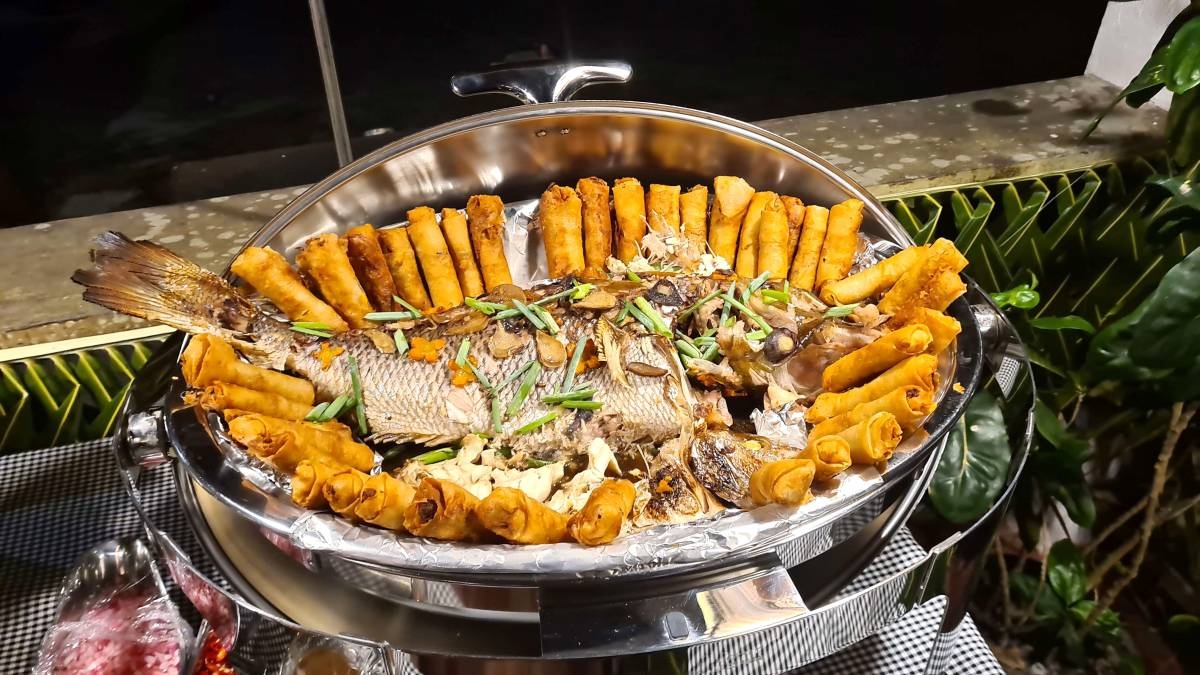
TICAO ISLAND
I was sitting quietly at the front of the van when our guide mentioned, "Did you know that the Manila-Acapulco galleon ships used to make a stop here?" We were passing through the small port town of San Jacinto on Ticao Island in Masbate.
I usually ask more questions when I hear interesting facts about the places I visit, but at that moment, I wasn't ready. Ticao Island is such a mysterious place for travelers, and I was looking forward to the island revealing itself as we continued our journey.
It turns out that the Manila galleon trade route (1565 to 1815) did indeed regularly pass by Ticao Island via Ticao Pass on its way from Acapulco, Mexico, and possibly made a stop in San Jacinto before heading to Manila. The bay at San Jacinto was also the site of the historic 31-day naval siege between the Dutch (in their attempts to invade the Philippines) and the Spanish navies in 1645.
Fast forward centuries later, in 2003, a group of scientists and volunteers came across a school of manta rays in Ticao Pass, feeding on a dense plankton bloom. This led to the discovery of "Manta Bowl," a submerged seamount where manta rays and whale sharks (with Donsol located on the northern side of Ticao Pass) gather to feed on plankton. In 2012, another interesting discovery was made in Monreal: two irregular limestone tablets containing scripts believed to be a variation of Baybayin were found. These rare artifacts are now the centerpiece of the Filipino Ancient Script section of the National Museum.
This is Ticao Island: you have to go there to uncover its secrets.
Getting there
Ticao Island is not for those who simply visit places to check them off their bucket lists. The island is for the unhurried, as getting there requires patience — lots of it. The quickest way to reach Ticao is to fly from Manila to Masbate, and from Masbate (Mobo port), take a one-hour boat ride to Batuan on Ticao Island.
For those who wish to embark on a road trip, the ports of Pilar (11 hours from Manila) and Bulan (12 hours from Manila) in Sorsogon are the entry points, where roll-on, roll-off (Ro-Ro) ferries take two and a half and one and a half hours, respectively, to reach the port of San Jacinto. From the port, drive for another 30 minutes to reach the resorts (Ticao Island Resort and Ticao Altamar Boutique Resort), the bases for exploring the island.
Island hopping and diving
The resorts on Ticao Island are mostly situated overlooking Ticao Pass and are best enjoyed by lounging around, swimming, reading a book, and watching the sunset. Inland, the island can be appreciated by exploring its heritage sites, like the old houses of San Jacinto or the Rizal Elementary School in Monreal, where the Baybayin tablets were found.
South of the island is Bongsalay Mangrove Park, a 244-hectare old-growth mangrove forest managed by the local community in the town of Batuan.
From December to May, divers come to Ticao Pass to witness the natural phenomenon called manta ray feeding and cleaning. Resorts in Donsol and Ticao offer diving tours during this season when the strong current from San Bernardino Strait brings these gentle giants to Manta Bowl to feed on microscopic plankton, small fish, and tiny crustaceans.
During other seasons, you can rent a boat from the port of Monreal for island hopping. The tour takes visitors to San Miguel Island, where Halea Nature Park is located. The park is set inside a cove with an attractive white sand beach surrounded by unbelievably crystal-clear waters, perfect for swimming and snorkeling. The park is also a place where one can dive to witness harmless baby sharks swimming around in its shallow waters.
Another hidden attraction that can be visited is the coral garden between Sitio Lapus Lapus and Yeso Island, as well as the Guinlatayan Rock Formation and Bird Sanctuary, where seabirds find refuge and lay their eggs. A popular stopover is the Borobangkaso Rock Formation, a small island featuring stone slabs stacked together to form several columns.
Tidefalls
The there are tidefalls are waterfalls that flow directly into the ocean. According to GeographyRealm, "Out of the over 7,800 waterfalls in the world, there are only 31 known perennial and seasonal waterfalls that empty directly into an open ocean or sea (as opposed to flowing into a river, stream, inlet, or fjord)." One of these tidefalls is located on Ticao Island, known as Catandayangan Falls.
Catandayangan is situated on the western part of the island, about an hour by boat from Monreal port. It is a 100-foot tidefall that empties into Masbate Pass. It is the perfect spot to end a Ticao Island adventure: bathing in the refreshing waters cascading from the mountain before plunging into the cool sea water of Ticao. It's a one-of-a-kind experience, waiting for those who dare to explore the untouched beauty of Ticao Island.
2024-08-19T16:23:50Z dg43tfdfdgfd